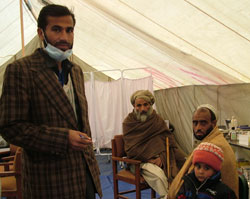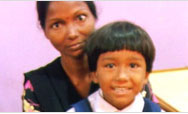You are here » Home » Telling Our Story
Photo & Caption
A Doctor in the Neighborhood

| |
Photo: USAID/Kaukab Jhumra Smith
|
|
USAID helped set up basic health care units like this one after the October 2005 earthquake cut villagers off from doctors and hospitals. More than 50,000 people have access to the units, and health workers are reaching out to nearby communities to provide care and education.
|
Sai Mohammed suffers from a hacking cough. He lives in Jambori village in northern Pakistan’s Siran Valley. Before the October 2005 earthquake struck his village, Mohammed would visit his doctor at the area’s only health care facility in a remote part of the district. The quake destroyed that facility, as well as many others. Mohammed’s only option for seeking medical care was to take a bus to a private hospital, a day trip that would cost him at least $5, a large sum by local standards.
Now, Mohammed and his neighbors can access health care in their own areas. USAID and its partners have set up four basic health units in Siran and Konch Valleys to provide primary health care and referrals to specialized hospitals. Thanks to more accessible health care locations and 24-hour availability of staff, the number of people seeking medical attention has doubled since before the earthquake, the medical staff says. The unit staff include 16 male and female doctors and 12 male paramedics. In addition, 16 female nurses and health workers reach out to surrounding communities tell them about health services and train them in good hygiene practices. Ambulance services with stretchers, oxygen delivery, and other medical supplies transport patients to units or to specialized health facilities. The Jambori unit, which includes a laboratory, a pharmacy, a vaccination room and a patient ward, treats about 320 patients a day and is now moving from tents into permanent concrete and steel structures.
Working together, USAID and its partners are helping to build healthy communities and ensure that there is always a doctor in the neighborhood for villagers like Mohammed, whose cough has improved now that he has regular access to medical care.
Print-friendly version of this page (461kb - PDF)
Click here for high-res photo
Back to Top ^ | 

